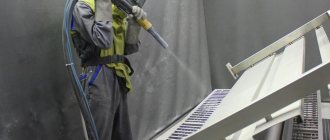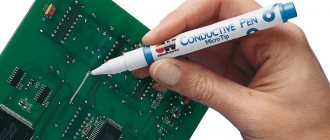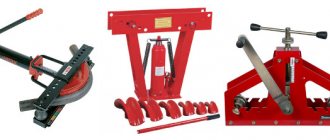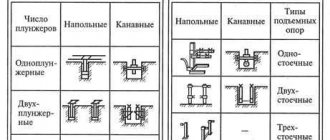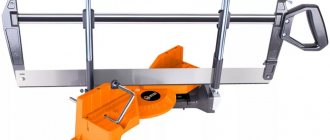A sandblasting chamber is a useful device that allows you to effectively and with the maximum degree of safety, using abrasive material, clean various surfaces from contamination, remove traces of corrosion and old coatings.
Ejector-type sandblasting chamber
Not only ordinary quartz sand, but also a number of other materials can be used as an abrasive powder, which is sprayed in such a chamber under high pressure:
- shot made of steel or cast iron;
- glass granules;
- electrocorundum;
- slag materials obtained after the production of copper and nickel (cooper slag and nickel slag).
Sand of various fractions
The choice of one or another abrasive material depends not only on the type of surface being treated, but also on what needs to be cleaned from it.
Factory-made sandblasting chambers: as we can see, there is nothing overly complicated in their design
Types of sandblasting chambers
There are two types of sandblasting chambers on sale – inhabited and uninhabited. The main characteristics and operating features of inhabited cameras are as follows:
- these are sealed rooms of a large area where the operator is located, processing the products,
- the walls inside are covered with soft shock-absorbing material that dampens abrasive ricochet,
- after hitting the surface of the product, the air-abrasive mixture, along with the destroyed particles and processing, falls onto the floor grate, from where it enters the collection and return device,
- the collected mass goes into a cyclone-type separator, is divided into waste and abrasive, which can be reused,
- dust and waste are transferred to a storage tank outside the chamber, and abrasive is transferred to a hopper for further use.
Uninhabited devices are smaller. In appearance, such a chamber is a rectangular cabinet into which the master inserts his hands through special holes and carries out all the necessary actions. Such devices process small-sized products, and they can be made with your own hands.
Safety precautions
Whatever one may say, abrasive processing is a risk to human health. The master inhales dust and particles of material poured inside. Therefore, the main safety measures remain the protection of eyes, skin, hearing and breathing. When working with sandblasting, the particles have a speed of 650 km per hour. Improper use may result in serious personal injury to the employee.
The surface cleaning process itself is very noisy and dirty. Therefore, it is necessary to ensure that the master has a special suit and shoes for work, puts on gloves made of leather, and also does not remove the sandblasting helmet, into which purified air is supplied. The use of respiratory protection is mandatory.
Design and principle of operation of the sandblasting chamber
A sandblasting machine helps solve a large number of problems. It cleans any surface - metal, wood, concrete, brick, it is only important to choose the right power of the device and the type of abrasive. After sandblasting, the service life of products increases, especially for metal. Using sandblasting, you can degrease surfaces, prepare them for further work, clean glass before decorating, matte products, and even artificially age their surface.
At home, small uninhabited chambers or tubeless pistols that work outdoors are usually used. It is unrealistic to equip a home or garage with an inhabitable chamber - this system is complex, expensive, and belongs to the industrial category.
The design of an uninhabited camera is simple. This is a metal cabinet with a beveled lid and a built-in viewing window. In the front wall there are 2 round holes with sealed cuffs into which the operator inserts his hands. There is a grate on the floor for pouring waste material. For ease of removal of abrasive, the lower part of the chamber is made in the shape of a truncated pyramid. The dust is drawn through the filter into the dust collector. Products are loaded into the chamber through a door on the side surface.
The operating principle of the camera is as follows:
- after turning on the compressor, the air in the unit is combined with the abrasive material,
- under high pressure the mixture is supplied to the surface of the product through the nozzle of the gun,
- the base is cleaned of dirt, plaque, coatings,
- bulk waste is supplied to containers intended for this purpose,
- the surface of the object is blown with air for final cleansing.
Depending on the type of sandblasting gun, air supply with abrasive can occur in different ways. If the gun is an injection gun, then sand and air go to the device through different hoses. When the gun is pressurized, air and abrasive are mixed in advance and directed into the nozzle one sleeve at a time. Due to their low cost and ease of use, injection systems are used much more often in uninhabited chambers.
Sandblasting wood
Wood is a rather fragile material. Even with a long period of use, the surface of a log or board is destroyed. Local areas of rotting, delamination, and drying out form. A house made of logs or decorated with wooden elements begins to look unaesthetic. The same can be said about many products made from popular natural materials.
Sandblasting wood can restore the original appearance of walls or parts. Wherein:
- just a huge amount of dust is released;
- operation is noisy;
- a large amount of garbage remains.
Advice! If sandblasting of a log house is planned, it is recommended to hire specialists to carry out such work. They have experience in choosing the abrasive fraction to achieve a high-quality final result and high productivity. Professionals use good sandblasting equipment.
Cleaning the wood surface with abrasive can be carried out:
- to restore (restorate) the surface of the material, remove traces of rotting, drying, color changes;
- to prepare wood for the application of antiseptics or paints and varnishes.
Separately, it is worth considering sandblasting woodworking work such as blanching. This is an operation as a result of which the material is artificially aged, the appearance of rough processing is formed, and the texture appears. When working in art workshops, to protect against the release of large amounts of dust, blanching is performed in small sealed chambers equipped with ventilation units.
When sandblasting wood, fairly soft abrasives with a high soda content are used. In this way, high environmental safety of the treated surface is achieved. In addition, soda does not affect the color of wood or texture in any way, and can even be used during restoration work after fires.
Buy or make a homemade sandblasting chamber - which is better?
It is unrealistic to make an inhabited chamber yourself - this is only possible in a factory after careful design. The total cost of such installations starts from 1–1.5 million rubles; they include a housing made of steel or sandwich panels, a gateway with swing gates, grated flooring, complex ventilation, lighting, control systems, etc.
It is quite possible to make an uninhabited camera yourself, and it will work no worse than a purchased one. The feasibility depends on the availability of tools, materials, and accessories: if everything has to be purchased separately, it is easier to buy a ready-made camera in a specialized store.
Sandblasting glass
Matting is a very popular method of glass processing. Its main advantage: fingerprints are not visible on the surface of the material. With careful processing, such a level of roughness is achieved that the frosted glass does not collect dust and dirt.
Equipment for sandblasting glass operates according to the classical scheme. The abrasive, thrown at high speed from the nozzle of the gun (or a special head in automated devices), knocks out the smallest particles from the surface of the glass. As a result, it becomes rough and acquires a lower light transmittance.
Modern equipment for sandblasting glass is capable of:
- matt large areas or local, limited areas;
- work with mirrors, removing reflective amalgam;
- create patterns on the surface of the material.
A computer-controlled sandblasting machine for glass is capable of creating complex, multi-shade images. This is achieved by varying the number of times the head passes over individual areas of the picture. This frosting of glass can even be done on site at the customer’s place.
On a note! Mobile sandblasting on glass operates according to a hydraulic circuit. Purified water acts as the supporting body of the abrasive mixture. Frosting glass using this method does not create hazardous dust in the air, so it can be carried out in any room.
How to make a camera with your own hands
A small stationary camera will not take up much space; it can be stored and used in a garage or shed. Essentially, it is a box made of metal or other material, lined with metal more than 1 mm thick. It is best to place the finished camera on a table or other stand - this way it will be comfortable to work with it.
Work zone
The working area is the inner part of the chamber, closed during cleaning, into which the product is placed. There must be a mesh or grate on the floor of this area so that sand does not linger inside and fall through the bottom. The device must be equipped with a viewing window through which the operator can observe the process and evaluate the results.
Good lighting is planned at the top of the working area so that there are no dark areas left. The lamps must be closed, otherwise dust and sand will quickly damage all contacts. Inside the housing there are gloves attached with a clamp on the flange, as well as a sandblasting sleeve with a nozzle (in the pressure chamber) or a gun (in the injection chamber).
Cone bottom
The bottom must be large, otherwise the workings with abrasive will not be able to fit and will begin to layer and accumulate in slides. To easily remove waste, you need to provide unobstructed access to the bottom (it is most convenient to pour abrasive and dust into a regular bucket). If the chamber assumes the possibility of returning the mass, and its collection is carried out automatically, the bottom walls should be sloping.
Hood
The hood creates a vacuum of air and removes dust from the sandblasting chamber. It must be equipped, because part of the sand or other abrasive material, after hitting the surface of the product, is destroyed and turns into flying dust. To equip the hood, it is recommended to use an electric motor with a power of 0.3–0.75 kW with a bladed propeller.
Sandblasting machine
The basis of the entire system is the sandblasting unit itself, which processes various surfaces. The most common are injection guns that operate on a simple principle: compressed air is supplied separately from sand, and the latter flows by gravity from a separate container through its own hose. Typically, such devices are used to treat delicate surfaces - removing small dirt, frosting glass. The injection device will also remove a thick layer of paint and rust, but 3-4 times slower than a pressure device.
Pressure-type sandblasting machines have an air line divided into two parts: one goes into the container with abrasive, the second goes to the exit from it. After the sand is released under pressure, it is connected to a stream of compressed gas, and the acceleration of the particles will be maximum. With this processing, the speed of action is an order of magnitude higher.
General building
This section of the sandblasting installation connects the attachment parts, device control, and electrics. The holes for the arms should be located at a height convenient for the operator, and the distance between them should also be optimal. The most comfortable hole diameter is considered to be 10–12 cm, and this is the size of gloves that should be selected.
Sandblasting gloves must be strong and dense, because they will protect your hands from ricochet. To fasten them, it is better to choose flanges, which, after putting on gloves, are clamped with clamps. At the top of the common body there is an air damper through which clean air will flow.
Lighting
The lamps should illuminate the work area evenly so that all areas of the workpiece are clearly visible to the operator. To protect the lamps from impacts and dust, they are covered with a plastic casing on top, and to maintain transparency, a fine-mesh mesh is placed on the outside (the same device should be attached to the viewing window). Usually, two light bulbs are enough for high-quality lighting for an average-sized camera.
What else can a nozzle and gun be made from?
Making your own sandblasting gun is not difficult. For assembly, you can use a nozzle for a regular ball valve located at the end of the hose for discharging the air-sand mixture. The nozzle is a nut that clamps the outlet nozzle for the abrasive.
The nozzle, in turn, can be made on a lathe. But it is more rational to use a spark plug. The worn-out part is cut with a grinder, while the durable ceramic rod is separated from the metal parts of the structure, and its length is adjusted.
The process of cutting a candle requires appropriate skills. In addition, when cutting, a large amount of dust is generated, and a not very pleasant smell appears. If you don’t have a separate room and the skills to work with an angle grinder, it’s easier to purchase a suitable nozzle in a store.
DIY designs are often more effective than pistols, a wide range of which are commercially available. Therefore, if you have free time, it is wise to spend it on implementing your technical solution, and spend the saved money on other, no less important goals.
Making sandblasting yourself allows you to reduce the cost of purchasing a serially assembled machine by 3–5 times. Maximum savings can be achieved by using a homemade compressor, but it is very difficult to achieve sufficient power. The best option is do-it-yourself sandblasting in combination with a powerful factory compressor.
Recommendations for making a sandblasting chamber
Before you start creating a camera with your own hands, you need to develop its design and draw up a drawing. This will allow you to clarify the dimensions, purchase and measure materials correctly. The internal parameters of the device should not be made too large to avoid the effect of strong rebound and additional impacts of the abrasive on the product. If the chamber is still large, it is worth lining its walls from the inside with soft material, for example, rubber. Other tips for creating a sandblasting booth include:
- it is necessary to pay close attention to the quality of ventilation of the installation,
- to install the viewing window, it is advisable to purchase impact-resistant plastic, since simple glass will break quite quickly,
- It is recommended to lay a reinforced mesh at the bottom of the chamber, and place a strong chute under it for waste abrasive,
- To place any products in the chamber, including those with a non-standard shape, the sides should be covered with a tarpaulin and not made rigid.
Selecting the device to buy
If you decide to purchase a camera ready-made, you should carefully consider its characteristics, type, and purpose. For periodic household cleaning of parts, you can buy an injection sandblaster; for a large volume of work, it is better to invest in a pressure chamber. When the device is to be used professionally, it is recommended to pay attention to pressure devices with automatic abrasive recovery.
The stronger and higher quality the materials used to make the device, the longer it will last, so there is no point in buying the cheapest models that can break after the first use. If you want to save money, you can still make a sandblasting chamber yourself - it will be quite enough for household needs, hobbies and repairs.
Required Parts
If you have a desire to make sandblasting with your own hands from a gas cylinder, it should be noted that it is no more difficult than sandblasting from an ordinary plastic bottle.
- ball valves in the amount of two pieces.
- gas cylinder.
- pipe, it will be used to fill the reservoir with consumables.
- tee in the amount of two pieces.
- sleeve 15 millimeters in the amount of two pieces.
- clamps.
- tape required for sealing at joints.
